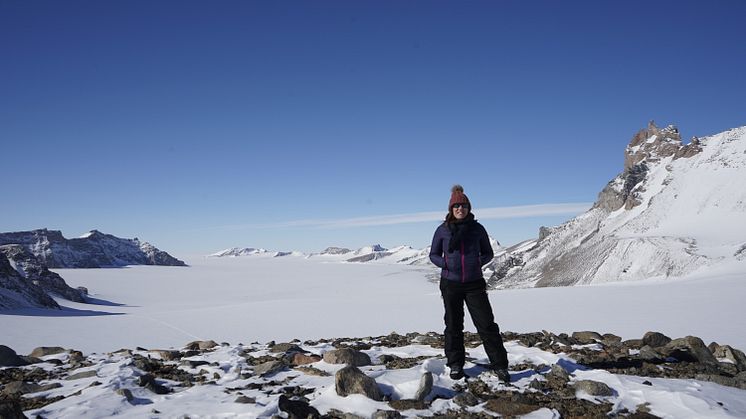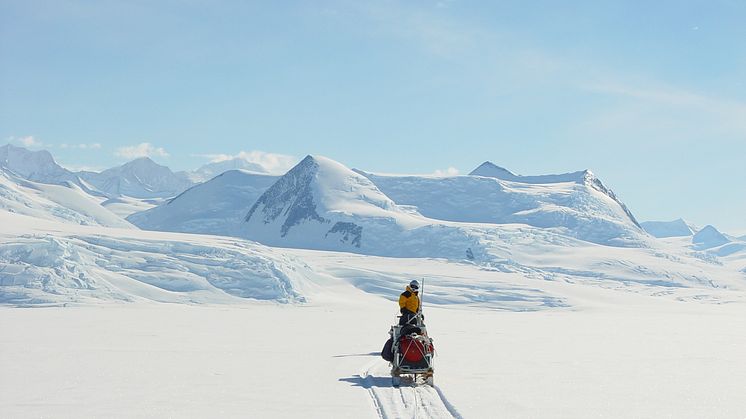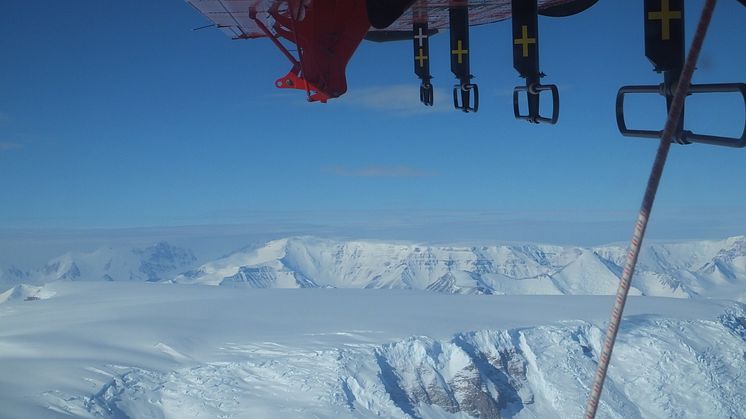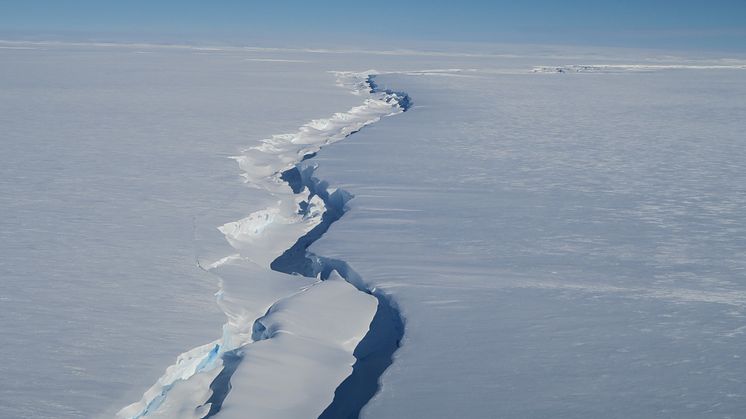
Press release -
Global channel broadcasts academics’ Antarctic footage
Dr Kate Winter, who is based within the Department of Geography and Environmental Sciences, specialises in using ice-penetrating radar and remote sensing techniques to understand what is happening underneath the Antarctic ice sheets.
Her work hit the headlines worldwide last year after she discovered three huge unknown canyons and mountain ranges buried near the South Pole, one of which was the size of New York’s Manhattan Island. In October 2019 she won the prestigious €150,000 Baillet Latour Antarctica Fellowship which provided enough funding for two further trips to Antarctica to conduct more original research.
After hearing she was due to return to Antarctica, producers from Bloomberg asked her to film her field trip for their Climate Travelers series.
Armed with a Go-Pro camera, a tripod, a mobile phone and a drone, she captured dazzling footage of the most remote landscape in the world to share with millions of people across the globe.
Her footage is now being broadcast to viewers worldwide on Bloomberg’s TicToc channel, which specialises in news and video reporting for on-the-go mobile users.
Dr Winter explained: “I’ve been so fortunate to be able to travel to Antarctica through my research. It’s an absolutely fantastic place and it’s hugely important for me to be able to share my experiences with as many people as I can so we can all learn more about the world around us.
“The opportunity to film my field trip for one of the world’s biggest broadcasters was an opportunity not to be missed and I hope that my story can help to inspire people in a variety of ways.”
During her field trip, Dr Winter filmed herself and her assistant undertaking research into how sediment from mountain rocks moves through the ice towards the coast.
She hopes to find evidence of iron in the rocks which could help to alleviate climate change once it enters the ocean.
“The East Antarctic ice sheet is over 2km thick, on average, and its flowing slowly towards the coast,” she explains.
“We’ve been collecting samples of rock from the mountains and the ice to see if they contain any iron. If there is, when it enters the ocean it could cause plankton blooms which draw carbon dioxide down from the atmosphere and lock it away deep in the ocean.
“As the ice sheet thins in response to climate change, more rocks could feed the ocean with nutrients and help reduce the quantity of greenhouse gas in the atmosphere.”
Marc Davies, who produced the show for Bloomberg, described Dr Winter’s footage as “absolutely stunning” and said it was a privilege for the channel to share her work.
Dr Winter is part of an esteemed team of researchers in Northumbria's Cold and Palaeo Environments research group, who are carrying out research around the globe to investigate both modern and ancient environments. The group specialises in research relating to ice, snow and permafrost and past climate and environment.
Dr Winter is due to return to the Princess Elisabeth Antarctica Research Station later this year to continue her research and assess changes in the landscape in the 12 months since her first visit.
Topics
Categories
Northumbria is a research-rich, business-focused, professional university with a global reputation for academic excellence. To find out more about our courses go to www.northumbria.ac.uk
If you have a media enquiry please contact our Media and Communications team at media.communications@northumbria.ac.uk or call 0191 227 4604.









